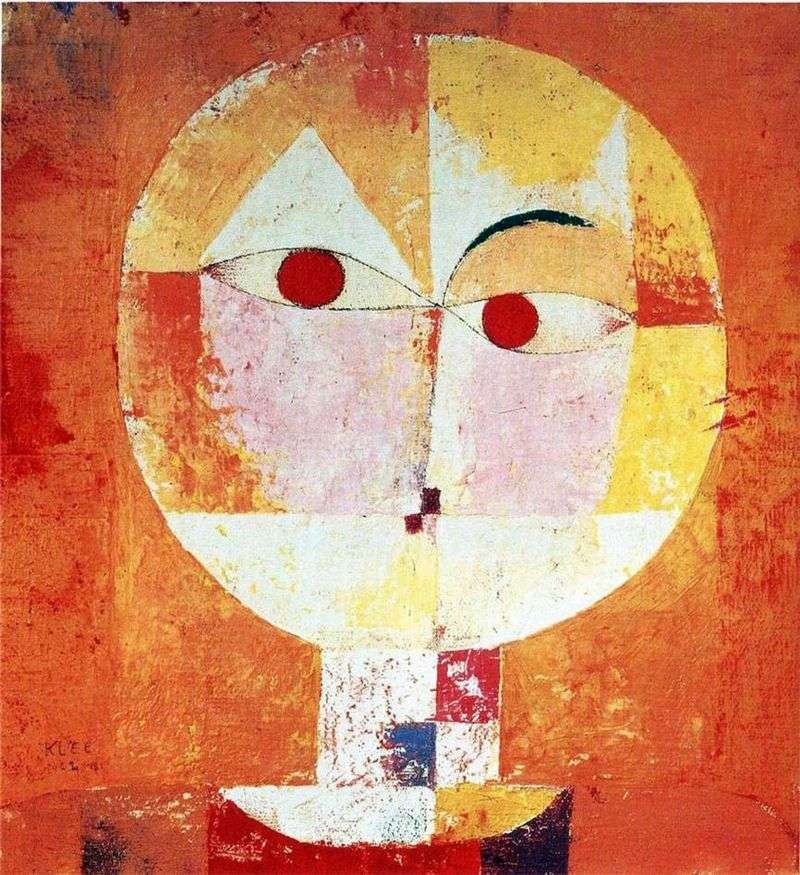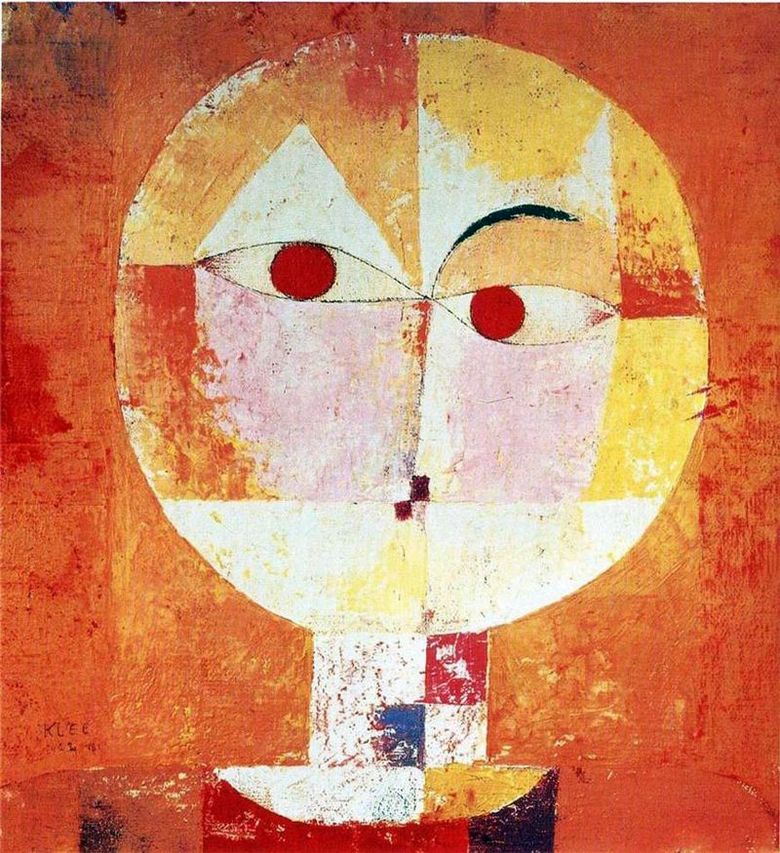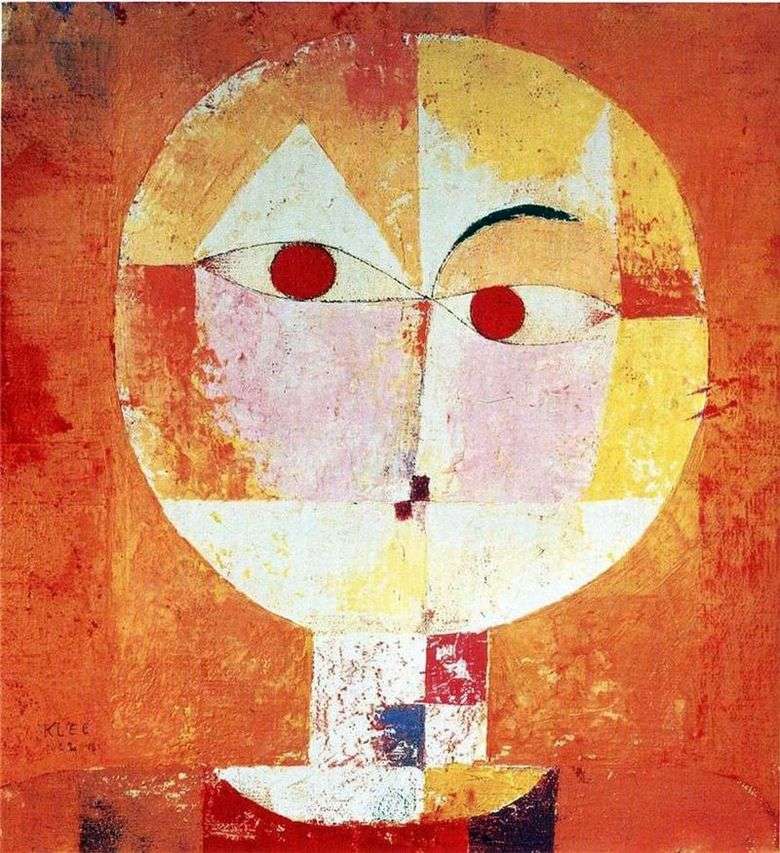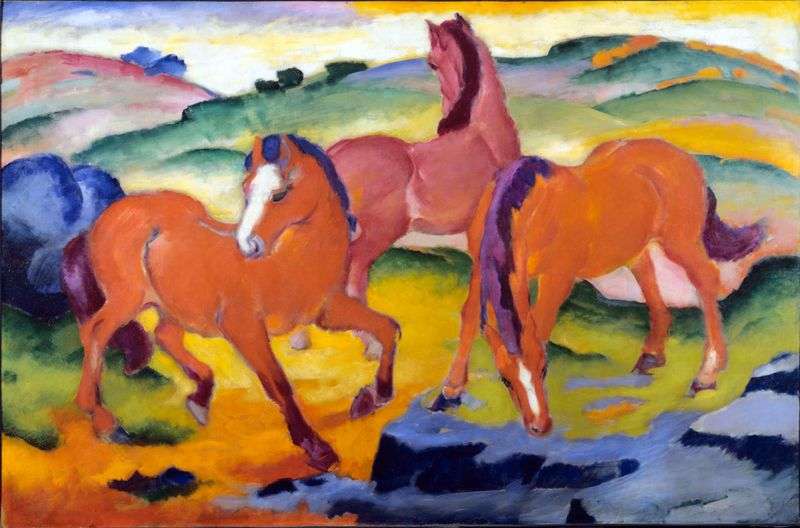
Klee Paul, a Swiss expressionist painter, a graphic artist who was a member of the Blue Horseman, was educated at the Munich Academy of Arts. Under the influence of the works of Cezanne and Kandinsky, he began to gravitate toward expression and abstractionism, at a more mature age he used elements of surrealism in his work, composing compositions from geometrically correct figures.
Paul Klee was a permanent member of the Expressionist Association “Blue Horseman”, which existed for 3 years – from 1911 to 1914. In addition to Klee, it included V. Kandinsky, M. Verevkina and A. Yavlensky. If the famous Russian artists later developed emotional abstraction with amorphous motifs, Klee more tended to geometric abstraction, in his works the rational and the irrational merged in an incomprehensible way into a single whole. V
In the picture “Senecchio” a schematically depicted human face, “broken” into multi-colored quadrangles; in turn, the “face” is inscribed in a kind of mask – a circle whose color solution resembles the Harlequin suit. The interpretation of the canvas is ambiguous, on the one hand, the play of the author’s artistic thought, which transmits the changing image of the actor, on the other – the interrelation of art, theater and the illusions of a creative person in perpetual changes.
The whole picture reflects Klee’s art style – a meaningful play of lines, spaces and color planes. The artist himself wrote that he “invites the line for a walk”. Being not only a “free” artist, but also a teacher at the Bauhaus design school, Klee published several remarkable works on the theory of art.
Klee was noted for his masterful possession of color, it is no coincidence that he is considered one of the most profound colorist modernists.
In his works he was able to achieve almost musical harmony of color shades, the form for him is mostly a homogeneous whole pictorial mass. P. Klee is considered by right one of the brightest representatives of modernism of the 20th century, which influenced the formation of almost all trends in contemporary painting.
In the years when the Nazis came to power in Germany, Klee’s work was recognized as “degenerate,” paintings from national museums were burned, and the artist himself was expelled from Germany.
 Senecio by Paul Klee
Senecio by Paul Klee Senekio – Paul Klee
Senekio – Paul Klee Senekio – Paul Klee
Senekio – Paul Klee Binz on Rugen by Vasily Kandinsky
Binz on Rugen by Vasily Kandinsky The Blue Horseman by Vasily Kandinsky
The Blue Horseman by Vasily Kandinsky Foxes by Franz Marc
Foxes by Franz Marc Several circles by Vasily Kandinsky
Several circles by Vasily Kandinsky Red Horses by Franz Marc
Red Horses by Franz Marc